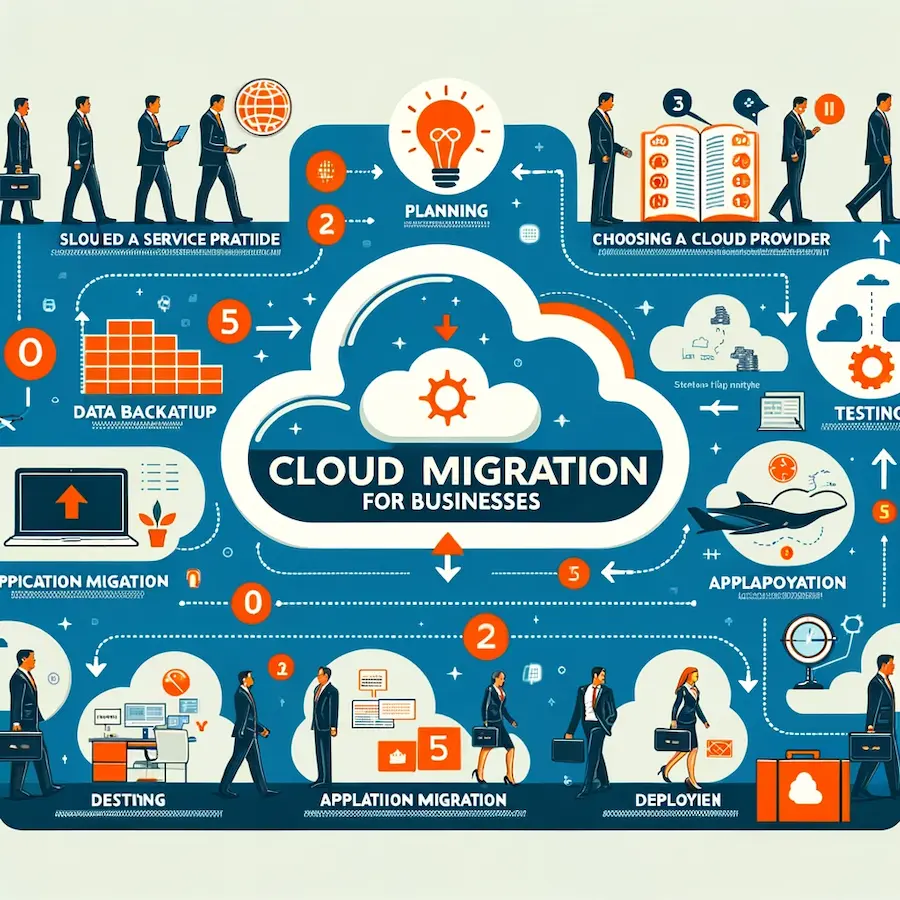Introduction
In today’s fast-paced business world, the shift towards cloud computing is not just a trend, but a key strategy for staying competitive. Cloud migration, the process of moving data, applications, and other business elements to a cloud computing environment, offers numerous benefits including scalability, efficiency, and cost savings. This guide aims to demystify the cloud migration process and provide actionable steps for businesses looking to make this crucial transition.
Why Cloud Migration is Essential
The decision to migrate to the cloud is driven by several compelling benefits:
- Scalability: The cloud provides the flexibility to scale your business operations up or down as needed.
- Cost-Effectiveness: It reduces the need for costly hardware and maintenance.
- Enhanced Security: Cloud providers invest heavily in securing their infrastructure.
- Improved Collaboration: Cloud services facilitate better collaboration among teams.
Take, for instance, a small retail business that experienced a 50% reduction in operational costs and a significant improvement in data security after migrating to the cloud.
Pre-Migration Planning
A successful cloud migration begins with thorough planning:
- Assess Your Current Infrastructure: Understand what needs to be moved to the cloud and why.
- Set Clear Objectives: Define what you aim to achieve with cloud migration.
- Choose the Right Cloud Service Provider: Consider factors like cost, security, and support.
- Compliance and Security: Ensure the chosen cloud service complies with industry regulations and standards.
Execution: The Migration Process
The migration process can be intricate, but breaking it down into steps helps:
- Data Backup: Ensure all your data is securely backed up before migration.
- Application Migration: Move your applications to the cloud environment.
- Testing: Rigorously test to ensure everything functions as expected.
- Deployment: Go live with your cloud environment.
Remember, communication with your team is key throughout this process.
Post-Migration: Integration and Optimization
Once you’re in the cloud:
- Integrate Cloud Services: Seamlessly integrate cloud services into your business operations.
- Optimize Resources: Regularly review and optimize your cloud resources for cost and performance.
- Continuous Monitoring: Stay vigilant with continuous monitoring for security and performance.
Best Practices and Common Pitfalls
Adhere to these best practices for a smooth transition:
- Detailed Project Plan: Have a clear and detailed project plan.
- Employee Training: Train your employees on new cloud-based systems.
- Pilot Testing: Conduct pilot tests before full-scale implementation.
Beware of pitfalls like underestimating the complexity of migration and neglecting the need for regular security assessments.
Conclusion
Cloud migration is no longer just an option but a necessity for businesses aiming for growth and adaptability in the digital era. By following these steps, businesses can ensure a smooth transition to the cloud, harnessing its full potential. Remember, the journey to the cloud, though challenging, is a strategic step towards a more efficient and secure business operation.
Explore the rest of our website Tech Glints, intriguing articles await you! Interested in contributing? Simply click the contact button at the top right. Thank you!
